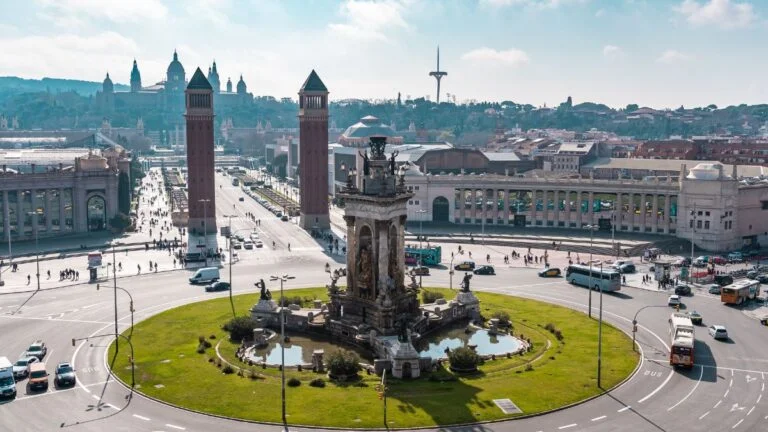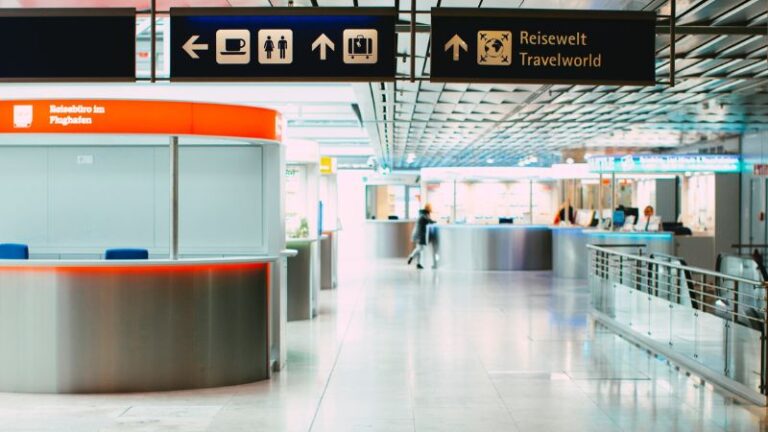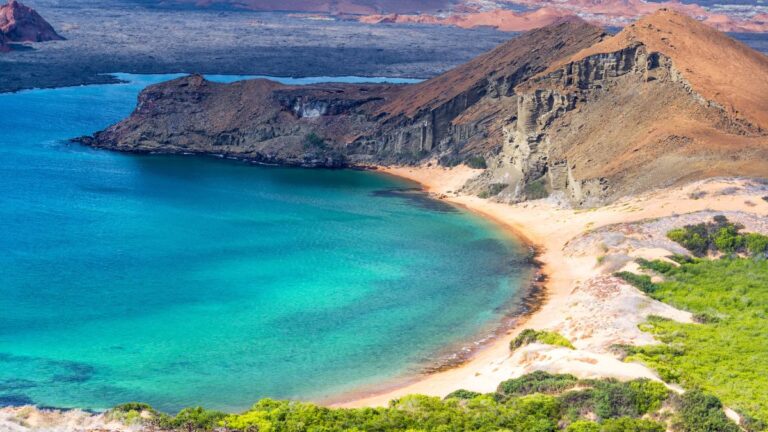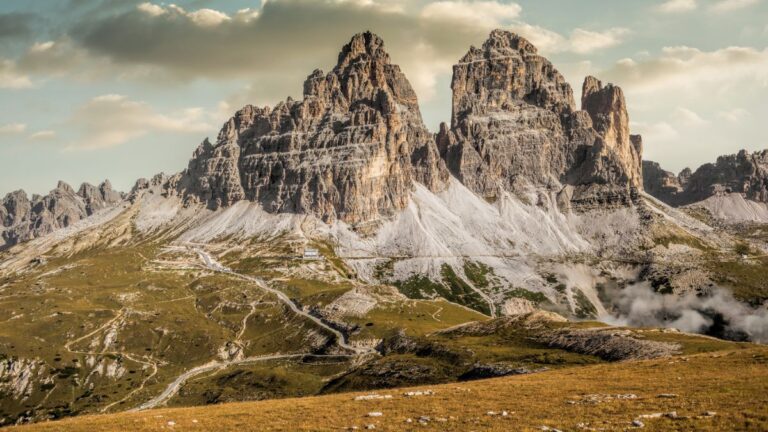Worst Time to Visit California: Understanding Wildfire Seasons and Tourist Peaks
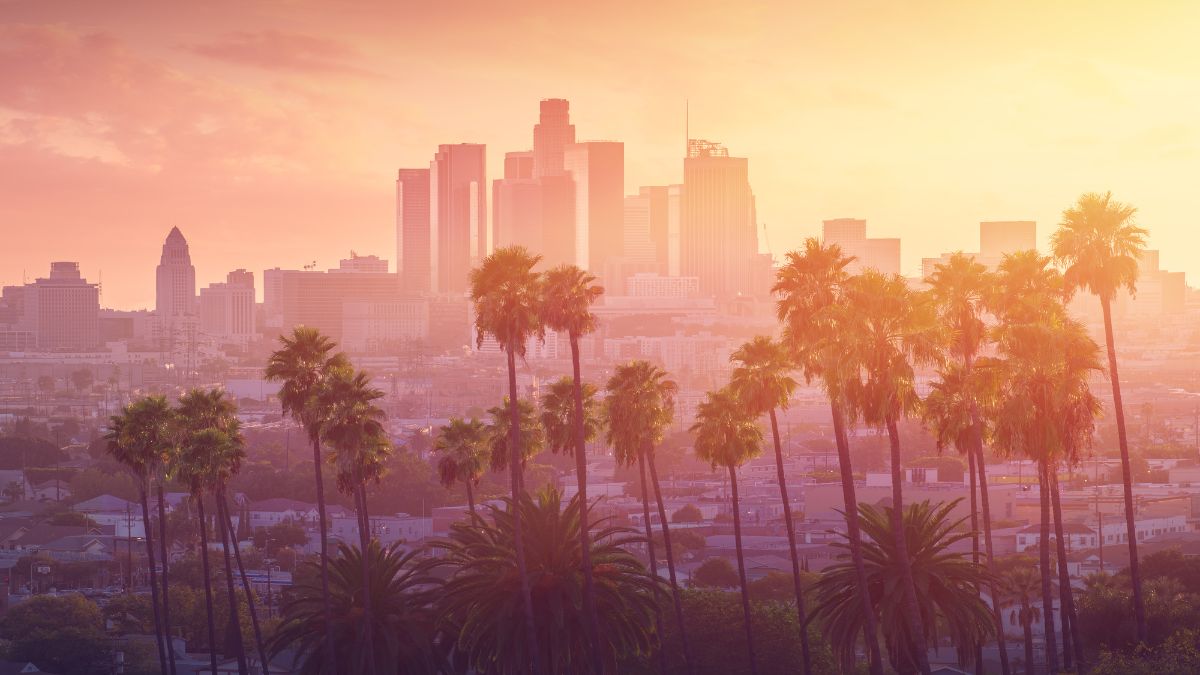
As participants in Amazon Associates and other programs, we earn from qualifying purchases. This comes at no additional cost to you. For more details, see our Affiliate Disclosure.
When planning a trip to the Golden State, it’s essential to know more than just the top tourist spots and beach destinations. While California boasts breathtaking coastal views, world-renowned wineries, and iconic cities, it also grapples with some critical challenges. Among them are the increasing incidents of wildfires and the influx of tourists at peak times. Both factors can impact a traveler’s experience significantly. This article dives deep into understanding the worst times to visit California, focusing on the wildfire seasons and the state’s tourist peaks.
HIGHLIGHTS
- The riskiest times to visit California are during its wildfire seasons and peak tourist times, particularly the summer months and major holidays.
- Real-time updates on fire situations are accessible through trusted sources like CalFire and emergency apps like FEMA.
- Exploring California during its shoulder seasons, specifically April-May and September-October, can provide milder conditions and fewer crowds.
Understanding California’s Climate Zones
California is a vast state with a topographical and climatic diversity that surprises many first-time visitors. From coastal regions to deserts and from verdant valleys to mountain ranges, its varied landscapes influence the climate in multifaceted ways. To truly grasp the intricacies of wildfire seasons and tourist peaks, it’s essential to first comprehend California’s distinct climate zones. Here’s a brief overview:
- Coastal Climate (Marine):
- Regions: This extends along the Pacific coastline, from San Diego in the south up to the northern border with Oregon.
- Characteristics: Mild temperatures year-round with frequent fog during summer mornings. Rainfall is more prominent in the northern sections.
- Inland Coastal Climate (Coastal Mediterranean):
- Regions: Areas slightly inland from the coast, including parts of the San Francisco Bay Area and the wine regions of Napa and Sonoma.
- Characteristics: Hotter and drier summers than the coastal zone but still relatively mild winters. Rainfall is seasonal, mostly occurring during the winter months.
- Central Valley (Continental Mediterranean):
- Regions: Includes the vast Central Valley region, with cities like Sacramento and Fresno.
- Characteristics: Hot summers and cool winters, with most of the rain occurring in the winter months. This region can experience significant temperature variations between day and night.
- Desert Climate:
- Regions: Encompasses California’s southeastern deserts, including the Mojave, Colorado, and parts of the Sonoran deserts.
- Characteristics: Very hot and dry summers with mild winters. Rainfall is sparse, and when it does occur, it’s often in the form of sudden and intense storms.
- Mountain Climate:
- Regions: Areas such as the Sierra Nevada, Cascade, and the peninsular mountain ranges.
- Characteristics: Greatly dependent on elevation. Higher altitudes can experience snowfall in the winter and mild temperatures in the summer. Lower mountain areas can be drier and warmer.
Understanding these zones is fundamental in planning a trip to California. While coastal areas might be experiencing pleasant temperatures, inland or mountainous areas might be grappling with extreme heat or cold. Moreover, some of these zones, especially the Central Valley and mountainous regions, are more susceptible to wildfires due to their dry and hot conditions.
Wildfire Seasons: An Overview
Wildfires have become an increasingly prominent feature of California’s diverse landscape. These natural phenomena, while essential for some ecosystems, have grown in frequency and intensity, posing heightened risks to residents and tourists alike.
Natural Occurrence
Historically, fires have played a crucial role in California’s ecosystems, rejuvenating the land by clearing out old growth and assisting in the germination of certain plant species.
Yet, human activities coupled with the shifting patterns of climate change have notably intensified the scale and regularity of these blazes.
When Wildfires Are Most Prevalent
In the past, the wildfire season was confined mainly to the late summer and early fall, corresponding with the drying out of vegetation. However, current trends indicate an extended risk from early summer to late fall, with some areas even facing threats year-round.
A mix of high temperatures, prolonged droughts, and regional winds, such as the Santa Ana winds in Southern California, amplify the fire dangers during these periods.
Regions Most Affected
Different parts of California face varying levels of wildfire susceptibility. In Southern California, locales like Los Angeles and San Diego counties find themselves at the crosshairs due to a combination of dry landscapes and the Santa Ana winds.
Meanwhile, Northern California, encompassing the Bay Area and regions further north, has witnessed some of the most destructive fires, driven by a combination of arid conditions and potent winds.
The Impact of Climate Change
The influence of global climate change on California’s wildfire seasons cannot be understated. Rising temperatures lead to longer drought periods, making the vegetation more fire-prone.
Additionally, the accelerated snowmelt ensures that landscapes dry out earlier, thereby extending the duration of the fire season.
Human Influence and Fire Starters
Human intervention remains a significant catalyst for many wildfires. Whether through discarded cigarette butts, unattended campfires, or power lines interfacing with trees, the human footprint is evident.
On the flip side, controlled or “prescribed” burns by forest management aim to reduce fire risks by eliminating dry vegetation. While these efforts are beneficial, they can also influence travel plans with area closures and warnings.
Travel Disruptions During Wildfire Season

Venturing into California during wildfire season comes with its unique set of challenges. The natural beauty and allure of the state can sometimes be overshadowed by the unpredictability of fires, which can lead to various disruptions for travelers. Recognizing these potential disturbances is paramount to ensuring a safe and enjoyable trip.
Road Closures and Evacuation Zones
One of the most immediate impacts of wildfires is the closure of major roads, highways, and sometimes even entire areas that are deemed at risk. These closures are both for the safety of the public and to allow emergency personnel unhindered access to affected regions.
Depending on the size and direction of a fire, evacuation orders can be rapidly put into effect, leading to sudden changes in travel routes and accommodations.
Air Quality Concerns and Health Risks
Wildfires don’t just impact the immediate vicinity of the blaze. Smoke from these fires can travel vast distances, significantly reducing air quality in areas even hundreds of miles away from the fire’s origin.
For travelers, this means potential respiratory issues, visibility challenges, and general health concerns, especially for those with pre-existing conditions, young children, or the elderly.
Alterations in Sightseeing and Activity Plans
Popular tourist spots, particularly national parks, forests, and other natural attractions, might be temporarily closed or restricted during intense wildfire activity. Even if the sites remain open, the haze from nearby fires can obscure vistas, making sightseeing less than optimal.
Outdoor activities, such as hiking, camping, or even beach outings, can also be affected by poor air quality or direct fire threats.
Accommodation and Facility Shutdowns
Hotels, campgrounds, and other accommodations might shut down or be repurposed as relief centers during significant wildfire events.
This can leave travelers scrambling for alternatives, especially if they hadn’t made prior reservations or if the region is witnessing a surge in displaced residents seeking temporary shelter.
Communication Challenges
During intense wildfire situations, local communication networks can be overwhelmed.
Whether it’s cellular networks facing congestion or local radio stations being dedicated to emergency broadcasts, travelers might find it challenging to stay informed or reach out for assistance.
The Peak of Tourist Seasons: High Demand Areas
When it comes to travel destinations, California reigns supreme with its kaleidoscope of attractions. However, this popularity also means that certain times of the year witness a massive influx of visitors, leading to crowded venues, longer waiting times, and sometimes even diminished experiences. Identifying these high-demand periods and areas can help travelers optimize their journey.
The Lure of Southern California’s Beaches
SoCal’s coastline, stretching from Malibu to San Diego, is a magnet for sun-seekers, especially during the summer months. Beaches like Santa Monica, Huntington, and Venice can become particularly crowded, with parking becoming a challenging task and beachfront accommodations booked out months in advance.
Northern California’s Wine Country Crowds
Napa and Sonoma Valleys, renowned for their world-class wineries, see a surge in visitors, especially during the fall harvest season. The picturesque vineyards and tasting rooms can become notably busy, with popular wineries often requiring advance reservations.
National Park Surges: Yosemite, Sequoia, and Beyond
California’s national parks, such as Yosemite, Sequoia, and Joshua Tree, are wonders to behold. However, their beauty is no secret. The summer months, coupled with school holidays, see these parks at their busiest, often leading to entrance delays, full campgrounds, and crowded hiking trails.
The Hollywood Hustle
Los Angeles, with its Hollywood allure, draws a vast number of tourists year-round. However, during major events like film premieres or awards seasons, certain areas, including the Hollywood Walk of Fame or Beverly Hills, can see intensified visitor numbers.
Silicon Valley and Tech Tourism
While not the conventional tourist spot, Silicon Valley has seen a rise in “tech tourism” with visitors keen on touring the campuses of tech giants like Apple and Google. Launch events or conferences can cause certain areas to be more populated than usual.
The Coastal Drive on Highway 1
The iconic drive along the Pacific Coast Highway is a bucket-list item for many. Consequently, summer months see a higher volume of road trippers, making some viewpoints and rest stops particularly crowded.
While high demand indicates the undeniable charm of these locations, knowing when they’re most crowded can be beneficial. For those who prefer a quieter, more relaxed experience, it might be worth considering alternative dates or exploring some of California’s equally captivating but lesser-known gems.
Balancing Wildfire Risks with Tourist Peaks
Navigating the allure of California’s attractions amidst the realities of its wildfire seasons can be a complex endeavor for travelers. Striking a balance requires understanding the confluence of peak tourist times and wildfire vulnerabilities. Here’s a guide to harmoniously merging these factors for a rewarding travel experience.
Understanding the Dual Peaks
Traditionally, California’s peak tourist season coincides with summer months and major holidays, exactly when the state is most parched and susceptible to wildfires. This overlap means that while attractions are at their most lively and engaging, the risk of wildfires is simultaneously elevated.
Prioritizing Safety Over Scenery
While the temptation to visit iconic spots during their prime is understandable, safety should always be paramount. It’s crucial to stay updated with real-time information on wildfire occurrences, especially when traveling to or through vulnerable areas. Checking websites for state parks, national forests, or CalFire can provide crucial updates.
Exploring Off-Peak Advantages
Consider visiting during shoulder seasons – the periods just before or after peak times. Not only can this result in fewer crowds and a more personal experience, but the slightly cooler temperatures can also reduce wildfire risks. For instance, late spring or early fall can be ideal for areas like Napa Valley or coastal regions.
Adaptable Itineraries
Given the unpredictable nature of wildfires, flexibility is key. Having a backup plan or alternative destinations can alleviate disappointment if original plans are disrupted. For instance, if Yosemite is affected by fires, the nearby Kings Canyon might be a viable alternative.
Staying Informed on the Go
Utilizing apps and local news sources that provide real-time updates on wildfires, road closures, and air quality can be immensely beneficial. These resources not only ensure safety but also help in making informed decisions about outdoor activities.
Eco-Conscious Traveling
Lastly, as visitors, it’s crucial to adopt responsible travel practices. This means adhering to fire bans, properly disposing of waste, and being cautious with activities that can ignite fires, like campfires or cigarette disposal. Responsible tourism can play a role in reducing the human-induced fire risks.
Tips for Safe and Informed Travel During Risk Times
Navigating the scenic routes of California requires more than just a traveler’s spirit during risk-prone seasons. The juxtaposition of its beauty with potential dangers like wildfires calls for an informed approach to exploration. By equipping oneself with knowledge and adopting precautionary measures, one can ensure a memorable journey while sidestepping potential pitfalls.
- Stay Updated with Reliable Sources: Regularly consult websites like CalFire or local government portals for real-time updates on fire situations.
- Utilize Mobile Apps for Alerts: Download apps such as FEMA or the Red Cross for timely emergency notifications.
- Plan Flexible Itineraries: Always have alternate destinations or activities in case primary plans are affected.
- Adopt Fire-Safe Practices: Comply with fire bans and exercise caution with potential fire starters like campfires.
- Prioritize Indoor Activities During Poor Air Quality: Opt for museums or indoor attractions when outside air quality is subpar.
- Travel with an Emergency Kit: Ensure your vehicle is equipped with essentials including water, non-perishable food, first aid supplies, and a flashlight.
Alternative Times and Destinations in California
California’s vastness and diverse geography make it a year-round destination, offering an abundance of lesser-known treasures and off-peak travel times. For those looking to sidestep the mainstream tourist rushes and potential wildfire threats, consider the following alternatives:
Alternative Times
- Winter Getaways (December – February): While many flock to ski resorts during this season, coastal regions and desert areas can be quieter and equally enchanting. Plus, you’ll find milder temperatures than in the summer.
- Shoulder Seasons (April-May & September-October): The periods just before and after peak summer can be delightful. The weather is often pleasant, attractions less crowded, and the risk of wildfires can be reduced.
Alternative Destinations
- Central Coast Havens: Towns like Pismo Beach, Morro Bay, and Cambria provide a serene coastal experience without the overwhelming crowds of Southern California’s more famed beaches.
- Desert Delights: Beyond the well-trodden paths of Palm Springs, consider places like Borrego Springs in the Anza-Borrego Desert or the unique landscapes of the Mojave National Preserve.
- Mountain Retreats: Idyllwild in the San Jacinto Mountains or Julian in San Diego County offer tranquil mountain experiences. Both are perfect for those seeking fresh air, hiking opportunities, and charming town vibes.
- Redwood Reverie: While the Redwood National and State Parks are renowned, areas like the Humboldt Redwoods State Park or the Avenue of the Giants can provide a more secluded communion with these ancient trees.
- Historic Gold Country: Towns like Nevada City, Placerville, and Sonora reflect California’s Gold Rush history. They are nestled in the Sierra foothills and provide cultural experiences combined with scenic beauty.
- Wetland Wonders: The Sacramento-San Joaquin Delta region is often overlooked but offers boating, fishing, and a peek into California’s waterways and rich agricultural heartland.
By venturing beyond the typical tourist timelines and destinations, visitors can uncover the myriad hidden gems California has to offer, often with fewer crowds and a fresh perspective on this diverse state.
Crafting a Memorable, Safe Californian Adventure
Crafting a memorable journey through California that’s both enchanting and safe requires a blend of spontaneity and planning. The vast landscapes of the Golden State, from its sun-kissed beaches to its towering redwoods, promise diverse experiences for every traveler. Yet, with the unpredictability of wildfires and peak tourist seasons, a bit of foresight becomes invaluable.
Begin by researching the current state of affairs, especially if you’re traveling during potential wildfire seasons. Reliable sources such as CalFire provide real-time updates, ensuring you’re never caught off-guard. While the temptation to rely solely on spontaneity is real, a flexible itinerary can be a lifesaver. Always have a backup plan, whether it’s an alternate destination or a different activity.
Incorporate technology into your journey. Mobile apps like FEMA or the Red Cross offer timely alerts about potential emergencies. These apps not only prioritize your safety but also ensure that you can modify plans as situations evolve.
Safety doesn’t mean compromising on experiences. Instead of battling crowds during peak seasons, consider the charm of California’s shoulder months. The milder temperatures and less crowded attractions during these times offer a more relaxed and intimate experience.
For destinations, venture beyond the familiar. Instead of the bustling beaches of Southern California, the Central Coast boasts serene shores. Instead of mainstream mountain towns, places like Idyllwild provide a tranquil escape.
Lastly, respect the land you tread upon. Adopt fire-safe practices and be mindful of the environment. A responsible traveler not only ensures their safety but also contributes to the preservation of the places they visit.
With preparation and a dash of adaptability, your Californian adventure can be as unforgettable as the state’s iconic sunsets, echoing with memories of awe-inspiring landscapes and cherished moments.

